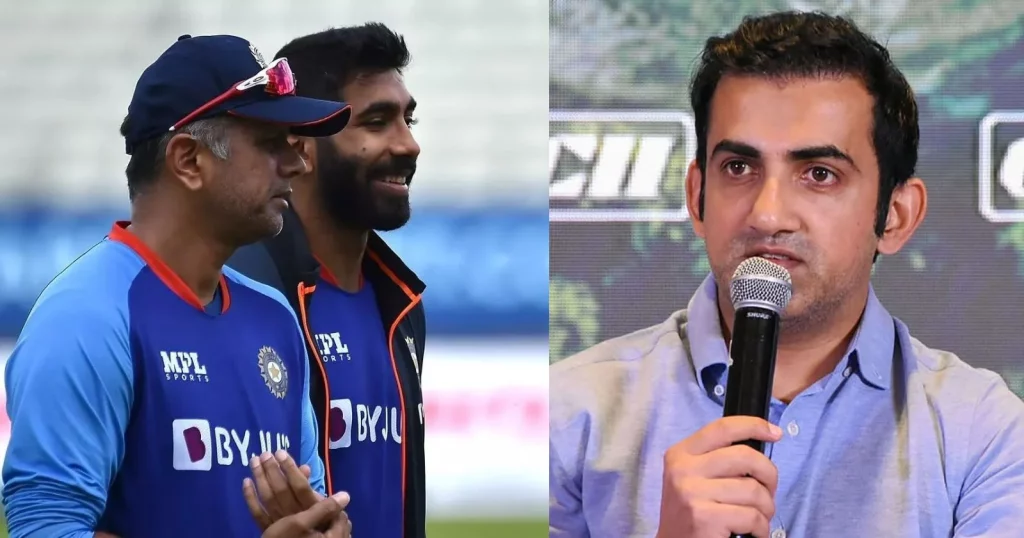With the Asia Cup 2023 in full swing and the upcoming ODI World Cup just around the corner, cricket pundits and fans alike are all eyes on the strategies employed by team India. Recently, Gautam Gambhir, a veteran of the Indian cricket team, made headlines with his bold opinion. During a discussion on Star Sports, he suggested that the Rohit Sharma-led team should maximize Jasprit Bumrah’s game time rather than focusing on workload management. He backed this perspective by emphasizing the infrequency of World Cups and the uncertainty of a player’s form four years down the line.
Gambhir’s viewpoint rings particularly significant given Bumrah’s recent return from injury. Though the right-arm pacer boasts a commendable 121 wickets in 72 ODIs, he has been on a hiatus from the format since July 2022. However, his prowess is irrefutable, with an enviable economy rate of 4.63, making him one of India’s most reliable bowlers.
Meanwhile, host Pakistan reached Sri Lanka, setting the stage for a much-anticipated clash against India on September 2 at Pallekele International Stadium. The Babar Azam-led team is in excellent form, recently clinching the No.1 spot in the latest ICC Men’s ODI Rankings. Moreover, Pakistan’s dominant win against Afghanistan has heated the competition, marking them as frontrunners in the Asia Cup alongside India.
Given these high stakes, Gambhir’s argument for maximizing Bumrah’s game time becomes even more relevant. Essentially, he rejects the conventional wisdom of workload management in favor of raw exposure to game scenarios. Gambhir posits that the upcoming matches against Pakistan, followed by a series against Australia, serve as the best preparation for the World Cup.
Asia Cup 2023: Gautam Gambhir wants Jasprit Bumrah to play for India now without any rest
Gambhir’s rationale stems from a belief in the virtue of momentum. For fast bowlers like Bumrah, consistent game time can refine their rhythm and accuracy. Conversely, intermittent breaks can disrupt this flow, causing inconsistency that might be detrimental in crucial matches. The former opener suggests that the quality of a bowler can only improve with the number of games played.
Moreover, Gambhir acknowledges the fleeting nature of peak physical condition, especially for fast bowlers. “The World Cup comes once in four years and no one knows what will happen after four years,” he argued. The uncertainty surrounding a player’s form and fitness several years later adds urgency to capitalize on current strengths.
He said: “Workload management is finished now. You are at a stage now where instead of workload management, you will think about more game time and bowling as much as possible, because you have the Asia Cup, then three matches against Australia, and then straightaway the World Cup. The World Cup comes once in four years and no one knows what will happen after four years, the fitness and rhythm a fast bowler will have after four years. I believe the more games he plays, the better he will get. The Indian team shouldn’t start giving him breaks now.”
ALSO READ Top 5 Fittest Cricketers In The World Currently
Finally, there’s a psychological dimension to consider. In high-pressure tournaments like the World Cup, mental readiness is as crucial as physical preparedness. The confidence derived from a series of strong performances can often make the difference between victory and defeat. As such, continuous game time provides not just the physical advantage but also a mental edge.
Gautam Gambhir’s strong stance on dismissing workload management in favor of consistent game time for Jasprit Bumrah holds substantial weight. This approach aligns well with the current high-stakes environment in international cricket, where teams like India and Pakistan are competing neck-to-neck. The focus, then, should be on leveraging current form and fitness to gain an advantage in the upcoming World Cup, as opposed to preemptive caution that might disrupt a player’s rhythm and confidence.

